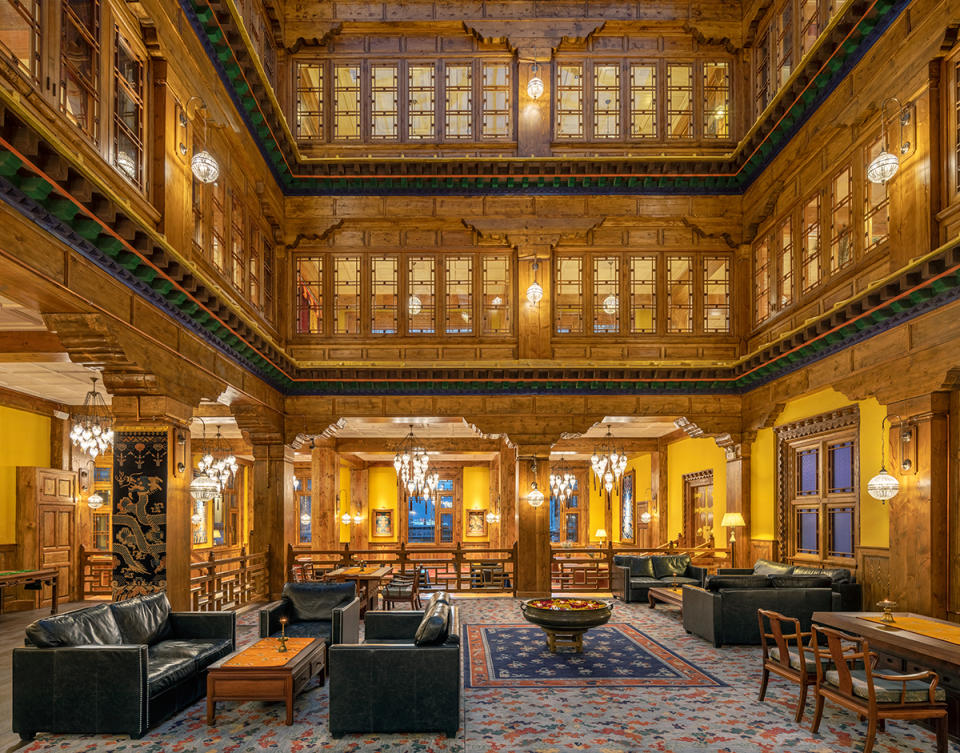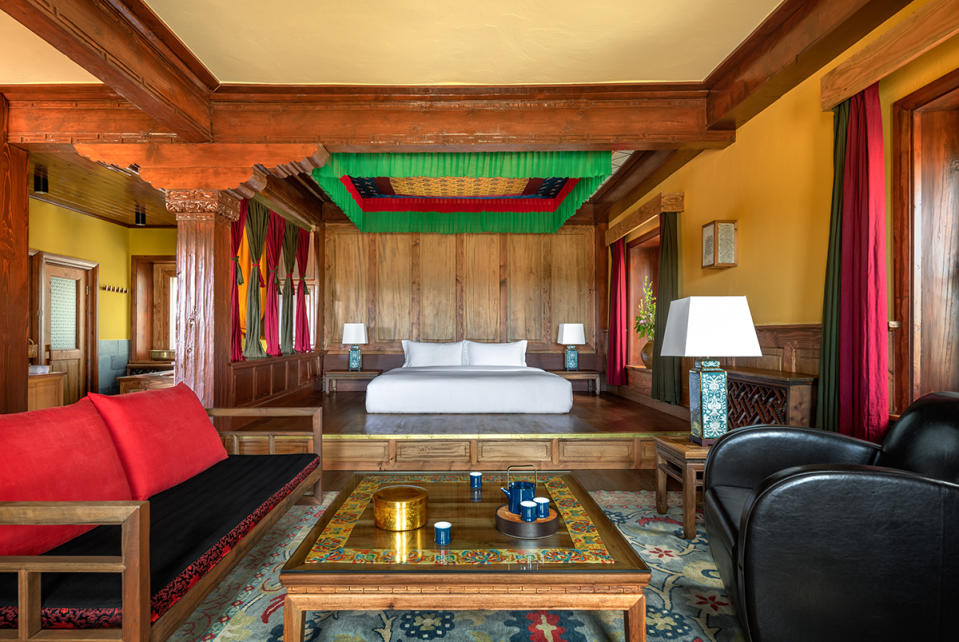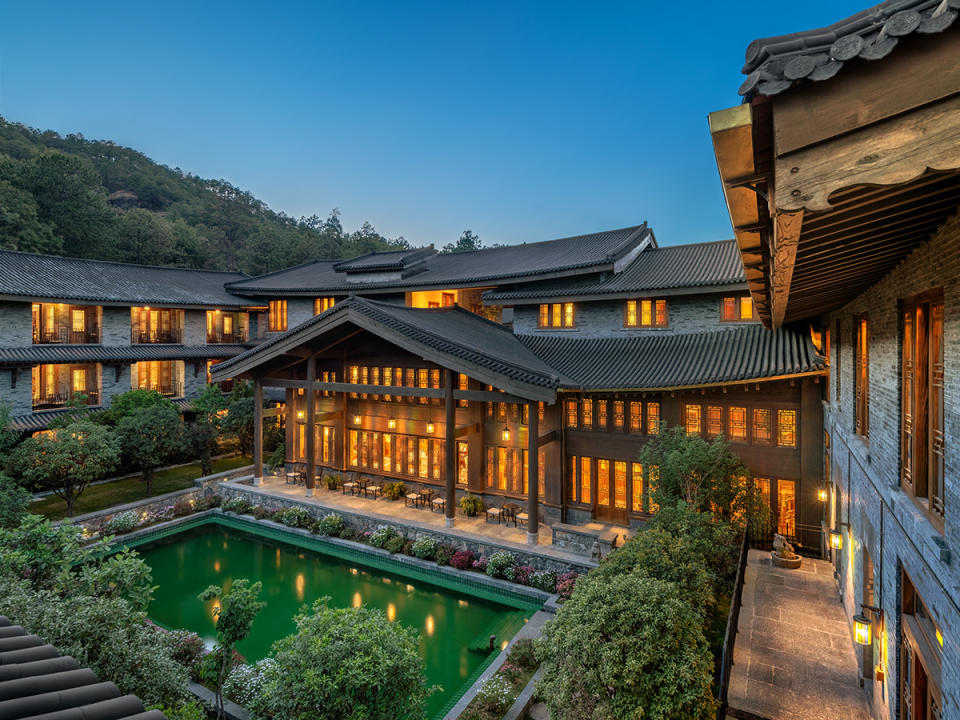There’s Never Been a Better Time to Visit Tibet. Here’s Why.

When you step off the plane in Lhasa and they welcome you with a white silk katak, don’t say 谢谢 (sye-sye)—Mandarin for “thank you.” Use the Tibetan phrase ཐུགས་རྗེ་ཆེ། (tuchi che) instead. The map says you’re in China, but you’re really in the Tibetan capital, home to the Potala Palace, the Dalai Lama’s former residence, and Jokhang Temple, the holiest site in Tibetan Buddhism.
But before the city takes your breath away, you’re probably already breathless because you’re 12,000 feet above sea level. Oxygen cans are just part of the revitalizing hospitality you’ll experience at the city’s finest hotel, the Songtsam Linka Retreat. Tibetan owned, this boutique chain of 16 properties throughout the region and neighboring Yunnan reflects the culture in its traditional architecture using stone and stained pine, as well as decor featuring thangka paintings and sculpture. It’s the most luxurious way to see Tibet and, with an easing of visa requirements for Americans as of January 1, there could not be a better time to go.
More from Robb Report
Silversea's Latest Itineraries Take Travelers Above and Beyond the Typical Cruise
This Kansas City Distillery's New Whiskey Pays Tribute to Baseball's Negro Leagues
In San Diego, a Documentary Filmmaker's Longtime Victorian Beach House Lists at $3.6 Million

With a view of the palace, the hotel’s superior suite includes sitting and work areas, a balcony, and a spacious bedroom and bath. In keeping with tradition, all bath fixtures are etched copper, a metal readily available from the world’s largest mine a short drive from the city. Cuisine ranges from fried yak meat with sour radish to spaghetti bolognese (also with yak).
Potala Palace occupies a hill overlooking the city and requires a steep climb just to reach the front door. With nearly vertical stairways throughout, its 13 stories house roughly 1,000 rooms, 10,000 shrines, and over 20,000 statues. Too bad photography is not permitted inside amid an astonishing collection of Tibetan relics, including the tombs of eight Dalai Lamas and thousands of thangka scrolls, murals, sculptures, and sutras. Originally built in the 7th century, it was destroyed 200 years later in a civil war but was reconstructed starting in 1645.
The colors of the city’s Red and White Palaces are maintained with an annual application of paint made from milk, honey, and sugar. The White Palace houses the Dalai Lama’s apartments, while the Red Palace is a place of religious study, history, and prayer.

At the nexus of an ancient network of temples in Lhasa sits Jokhang Temple, also established in the 7th century. A mixture of Indian vihara, Tibetan, and Nepalese design, it’s a focal point of commercial activity in the streets and alleys around it. Inside is the most venerated sculpture in Tibetan Buddhism, the Jowo Shakyamuni, a likeness of Buddha. Pilgrims make a clockwise circuit around the temple.
The other must-see in the region is Shangri-La, about 1,000 miles east in Yunnan Province. Although Wikipedia describes it as a “fictional place,” Shangri-La may seem out of this world but it’s very real. Its skyline is dominated by Ganden Sumtseling Monastery, Tibetan Buddhism’s largest with 700 monks. Built in the 17th century, it houses the 26-foot tall Shakyamuni Buddha statue in the main hall.

The Songtsam Linka Retreat in Shangri-La offers archery, ATV riding, and horseback riding on Mongolian horses. Or try a Manna Bath, a Himalayan Salt Body Scrub, or a Ku Nye Massage at the spa.
A two-hour mountain drive takes you to the valley of Tacheng, where another Songtsam Lodge is a local economic engine, sourcing food, wine, and manpower from the area. Highlights here include Dharma Cave, dug into a cliff face with a stunning view of the Yangtze River. The monastery provides a rare glimpse into the everyday lives of the monks, including a well worn basketball court.
Two hours south is the city of LiJiang, a good place to begin your journey for gradual altitude acclimatization. Reachable from North America via a connecting flight in Guangzhou, it’s a bustling city in which the Songtsam Lodge is an oasis of quiet. With rooms starting at $153, it’s an outlier among the destinations mentioned above with rooms at $209. LiJiang’s Old Town is packed with bars along a canal, raucous and colorful at night, and crammed with tourists. By day it’s a quaint neighborhood lined with winding alleyways, tea shops, and eateries.
Best visited between spring and fall, Tibet has the one ingredient that makes a trip halfway around the world worth taking—its warm, welcoming, and generous people.
Best of Robb Report
The Ultimate Miami Spa Guide: 15 Luxurious Places to Treat Yourself
The 7 Most Insanely Luxurious Spas in the World, From Tokyo to Iceland
17 Reasons the Caribbean Should Be at the Top of Your Travel Itinerary
Sign up for Robb Report's Newsletter. For the latest news, follow us on Facebook, Twitter, and Instagram.

